North America Smart Glass Market Size
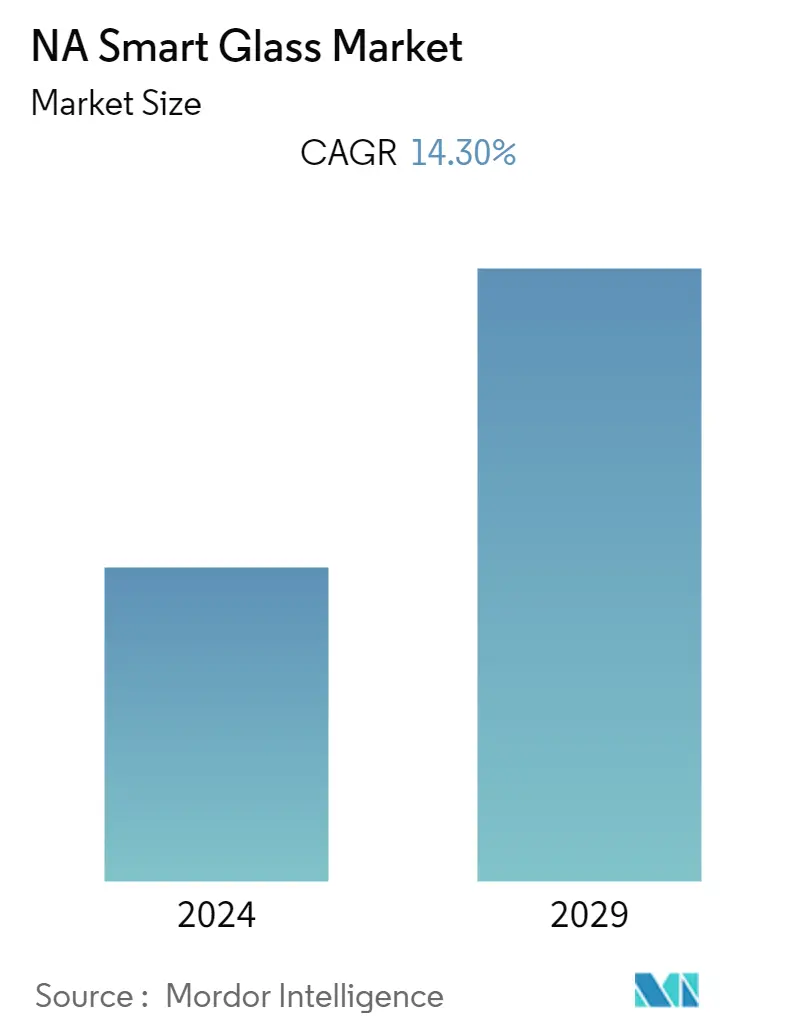
| Study Period | 2019 - 2029 |
| Base Year For Estimation | 2023 |
| Forecast Data Period | 2024 - 2029 |
| Historical Data Period | 2019 - 2022 |
| CAGR | 14.30 % |
| Market Concentration | Low |
Major Players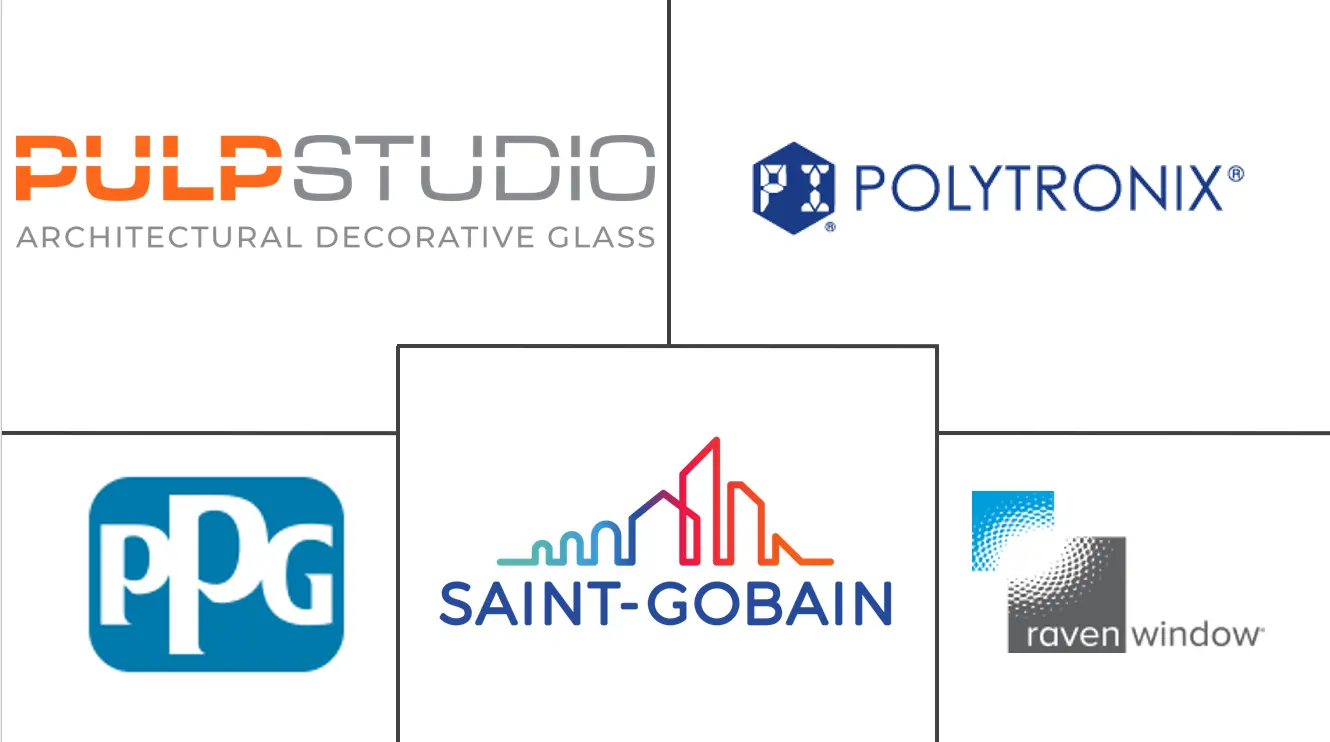
*Disclaimer: Major Players sorted in no particular order |
North America Smart Glass Market Analysis
The North American smart glass market is estimated to grow at a CAGR of 14.3% in the forecasted period (2021-2026). The smart glass market in the region has been gaining significant traction due to the surging demand for energy cost savings in high-end commercial offices and residential spaces. With a growing focus on sustainable development, an increasing number of people have been opting for user-controlled windows in buildings, due to which Smart glass manufacturers have been actively investing in research and development in the region to cut production costs by implementing newer technologies and low-cost raw materials.
In recent years, several offices, hotels, and residential homes have had smart glass installed in their premises. With more and more companies getting involved in the smart glass market in North America, the market has been heating up. Also, smart glass has been witnessing higher adoption in the Transportation industry. For instance, Boeing 787 Dreamliner uses smart glass so that the passengers and the in-flight crew can select the amount of sunlight coming through to their liking.
The construction industry holds the largest market share in the North American smart glass market, owing to the increasing demand for smart glasses in architecture and the improving real estate market in the region. Architects are increasingly using this type of glass to reduce the energy consumption of the building, due to which there have been increasing developments in the construction industry on smart glasses in the region.
The growing consciousness among individuals for the conservation of energy has gained a lot of impetus from a wide region of sources. Humans, for several centuries, have exploited non-renewable resources, which, in turn, has led to the depletion of these precious fossil fuels. This major concern helps the smart glass obtain a huge market for themselves, as they help save electricity without harming the environment or its resources.
However, one of the major growth restraints for the smart glass industry is its high expenses compared to normal glass. Additionally, lack of awareness of smart glass benefits and the existence of technical issues with the usage of large size smart glass are some of the key impediments hindering the growth of the market.
North America Smart Glass Market Trends
This section covers the major market trends shaping the North America Smart Glass Market according to our research experts:
Construction industry is expected to have further growth opportunities in the market
Smart glass is increasingly being adopted in the construction sector in the region. The buildings sector accounts for about 76% of electricity use and 40% of all U. S. primary energy use and associated greenhouse gas (GHG) emissions, making it essential to reduce energy consumption in buildings to meet national energy and environmental challenges, according to the Department of Energy.
Windows are considered the most inefficient part of a building and are responsible for heat loss in cold months and solar heat gain in warm months. Some researchers also stated that sunlight entering a house could increase cooling loads by 20%. In some cases, glare from the sun can make it difficult to see an LCD screen, requiring the blinds to be pulled, negating the benefits of natural light.
Thus, the adoption of smart glass in this sector can help in improving comfort levels for those inside the building while increasing energy efficiency. The key feature of these smart windows is a thin ceramic coating, which, when activated by an electrical current, is expected to tint the glass. Lawrence Berkeley National Laboratory (LBNL) stated that that advanced dynamic window technologies, or "smart windows," could save as much as one quadrillion BTUs of energy each year – which is more than 1% of the nation's annual energy consumption, or more than USD 10 billion in annual energy costs.
As building codes around the United States are driving the demand for greener designs, smart glass windows emerged as an appealing product to a variety of customers within the building sector. Such trends are expected to drive the demand for the smart glass market in the region.
The incentives provided by the governments in North America, primarily to encourage environmental sustainability, are expected to drive the market's growth, especially in the Americas. The strict implementation of the Green Buildings Act is expected to be a major positive force in the market, with the United States accounting for the majority of the global smart glass market share.
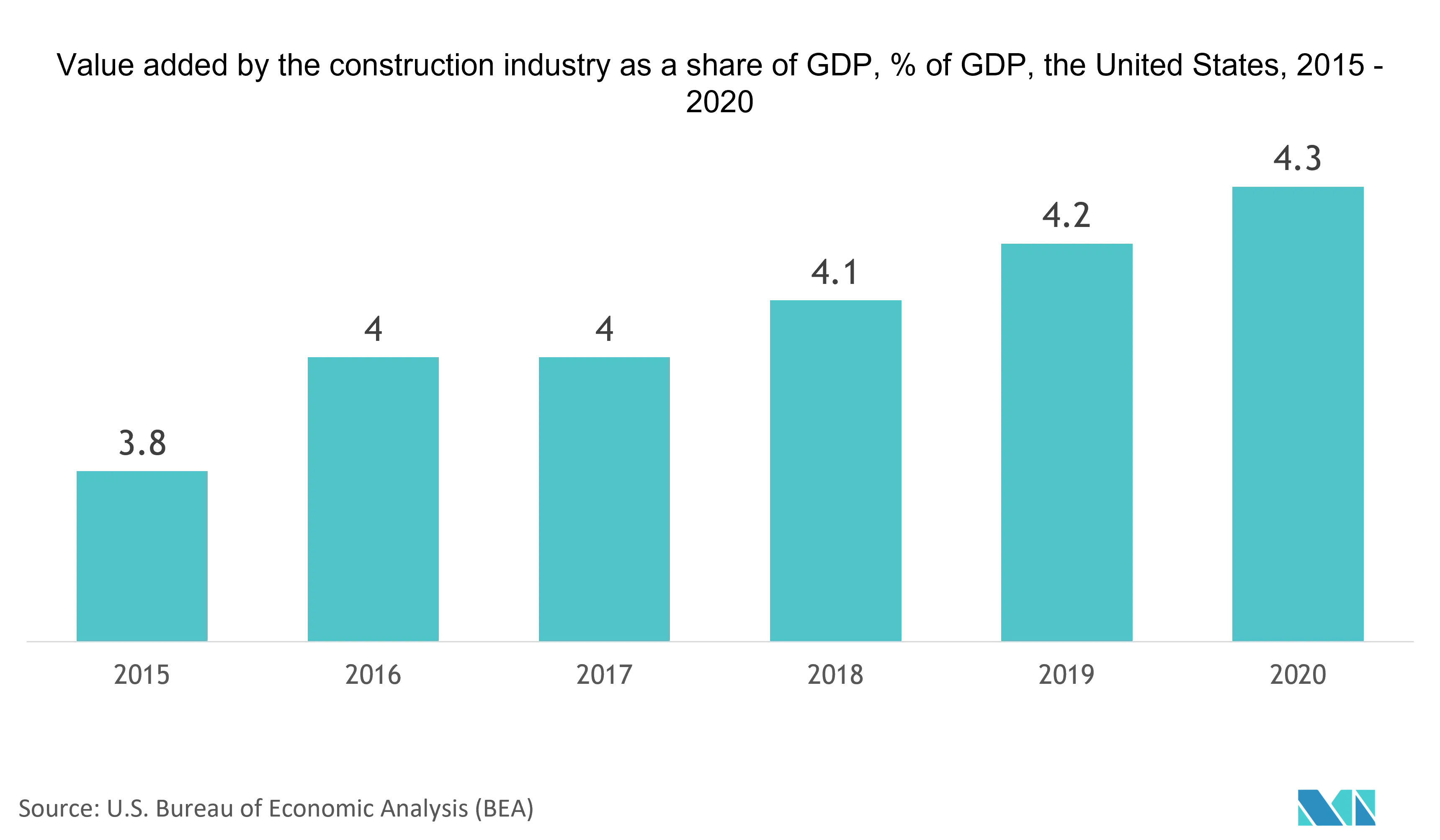
United States region witnesses significant growth opportunities in the market
Smart glass has become an increasingly popular feature for the commercial design sector because of its aesthetic value. For instance, a fine dining restaurant in North Dakota, Spirit Lake Casino, and Resort installed smart glass for providing spectacular views of the natural surroundings, despite solar glare problems. The technology helps the restaurant save money by reducing the conditions' cooling load of air conditions during sunny days.
The demand for smart glass has been progressing owing to the growing concerns of energy consumption in buildings, especially in the commercial sector. The buildings sector accounted for about 76% of the electricity used, resulting in a considerable amount of associated greenhouse gas (GHG) emissions, thereby making it necessary to reduce energy consumption in buildings to comply with the national energy and environmental challenges and decrease costs to building owners and tenants, According to the US Department of Energy.
According to the NYSERDA (New York State Energy Research and Development Authority), enabling smart technologies can decrease costs by an average of 15% and improve the bottom line by creating an ecosystem that reduces energy waste and boosts employee productivity.The factors mentioned above are anticipated to influence the demand for smart glass in the North American region.
As building codes around the United States have been driving the demand for greener designs, smart glass windows emerged as an appealing product to various customers within the building sector. Furthermore, the region has been seeing the adoption of technology from the government sector. For instance, Government Services Administration Headquarters (USA) adopted smart glass for renovation at its headquarters. Such trends are expected to drive the need for the smart glass market in the region.
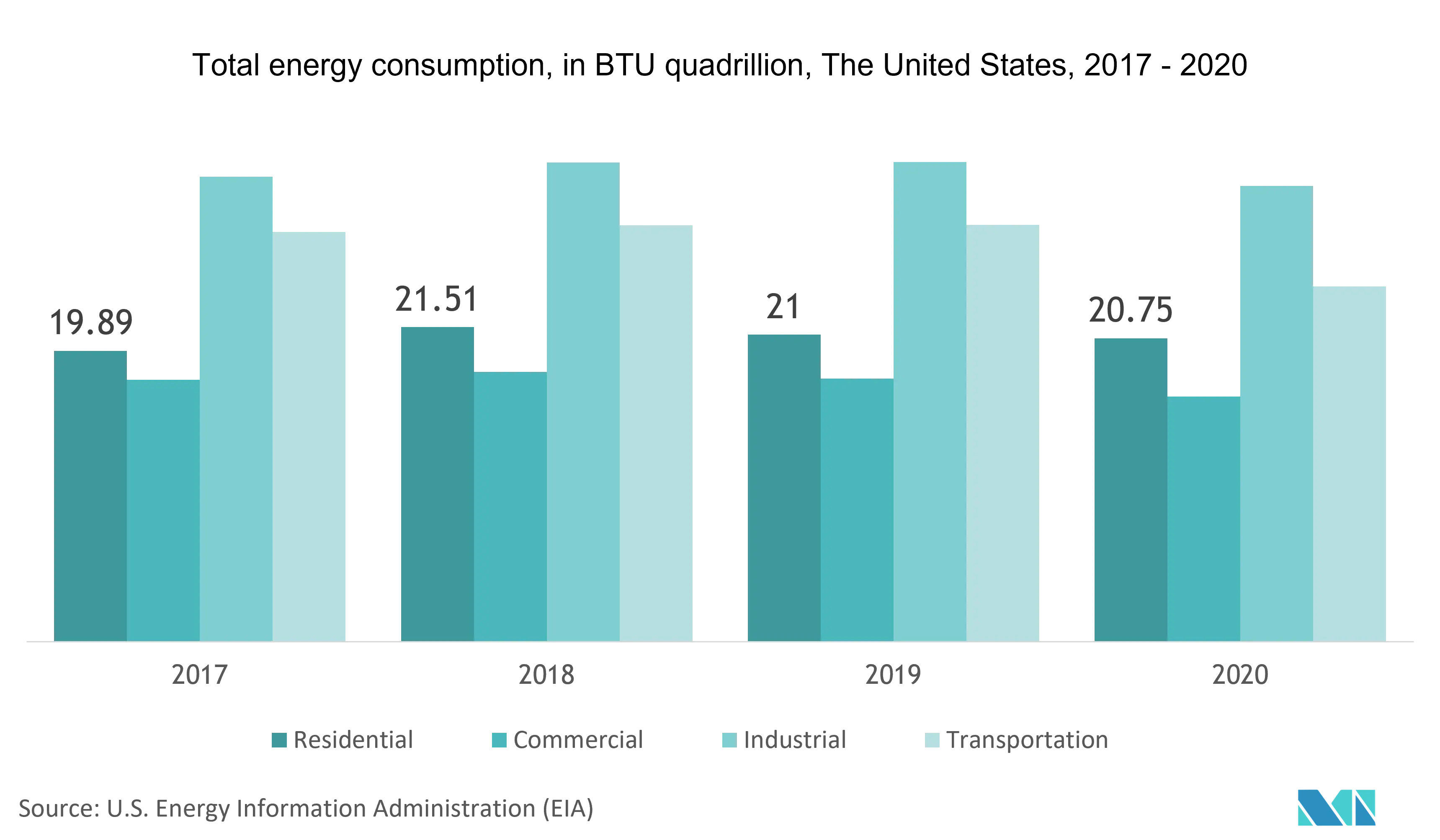
North America Smart Glass Industry Overview
The North America Smart Glass Market is fragmented. Various established international brands, domestic brands, as well as new entrants, form a competitive landscape. The major players are increasingly seeking market expansion through various strategic mergers and acquisitions, innovation, increasing investments in research and development.
- September 2021: Polytonix partnered with Anderson Glass to create three glass shields to protect the City of Hewitt Utility workers and customers from COVID-19. Polyvision Smart Tempered Glass was around 43.06 square feet combined but required only one power supply. The smart glass transitions from transparency to serene privacy with a flip of a switch.
- April 2021: SageGlass, a subsidiary of Saint Gobain, was chosen by Bagmane Group, one of India's largest build-to-suit real estate developers, to create one of the largest smart glass installations in the world. The company will provide 200,000 square feet of SageGlass Harmony electrochromic glass, controls, and software for Rio Business Park, a 1.6 million square foot office development in Bangalore, India.
North America Smart Glass Market Leaders
-
Polytronix Inc
-
PPG Industries
-
Saint-Gobain
-
Pulp Studio
-
RavenBrick LLC
*Disclaimer: Major Players sorted in no particular order
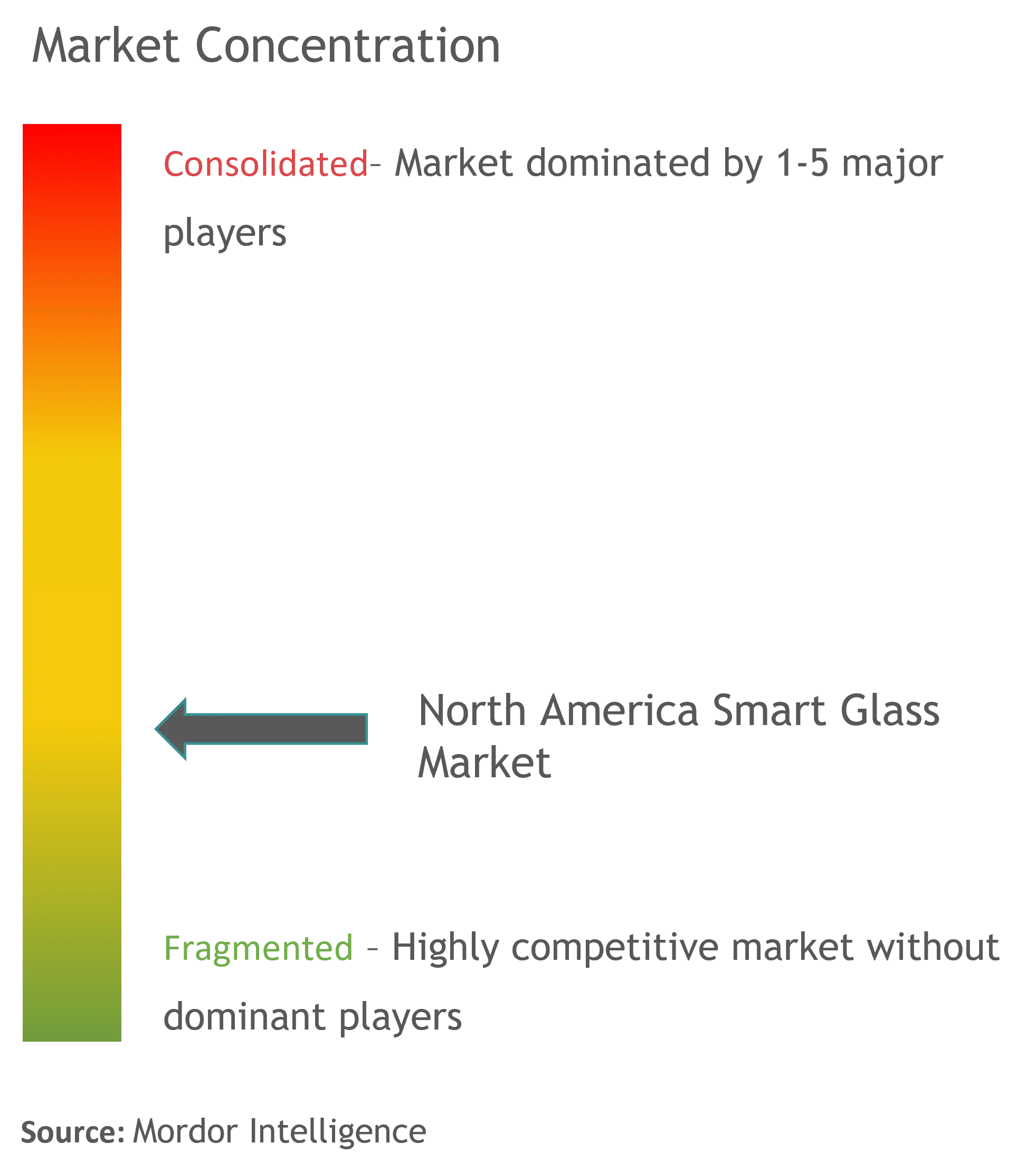
North America Smart Glass Market News
- September 2021: Xiaomi launched its own smart glasses, which are capable of taking photos, displaying messages and notifications, making calls, providing navigation, and translating text right in real-time in front of eyes. The glasses also have an indicator light that shows when the 5-megapixel camera is in use.
- September 2021: Facebook Inc, in partnership with Ray-Ban, launched its first smart glasses named 'Ray-Ban Stories' that allow wearers to listen to music, take calls, or capture photos and short videos and share them across Facebook's services using a companion app.
North America Smart Glass Market Report - Table of Contents
1. INTRODUCTION
- 1.1 Study Assumptions and Market Definition
- 1.2 Scope of the Study
2. RESEARCH METHODOLOGY
3. EXECUTIVE SUMMARY
4. MARKET INSIGHTS
- 4.1 Market Overview
- 4.2 Value Chain Analysis
-
4.3 Porter's Five Forces Analysis
- 4.3.1 Threat of New Entrants
- 4.3.2 Bargaining Power of Buyers
- 4.3.3 Bargaining Power of Suppliers
- 4.3.4 Threat of Substitutes
- 4.3.5 Intensity of Competitive Rivalry
- 4.4 Impact of COVID-19 on the Market
5. MARKET DYNAMICS
-
5.1 Market Drivers
- 5.1.1 Increasing focus on Energy Conservation and Environment Friendly Technologies
- 5.1.2 Governmental Regulations
- 5.1.3 Increasing demand for energy savings techniques
-
5.2 Market Restraints
- 5.2.1 Lack of Awareness of Smart Glass Benefits
- 5.2.2 Technical Issues with the Usage of Large Size Smart Glass
6. MARKET SEGMENTATION
-
6.1 Technology
- 6.1.1 Suspended Particle Devices
- 6.1.2 Liquid Crystals
- 6.1.3 Electro-chromic Glass
- 6.1.4 Passive Smart glass
- 6.1.5 Active Smart glass
- 6.1.6 Others
-
6.2 Applications
- 6.2.1 Construction
- 6.2.1.1 Residential Buildings
- 6.2.1.2 Commercial Buildings
- 6.2.2 Transportation
- 6.2.2.1 Aerospace
- 6.2.2.2 Rail
- 6.2.2.3 Automotive
- 6.2.2.4 Others
- 6.2.3 Energy
- 6.2.4 Consumer Electronics
- 6.2.5 Others
-
6.3 Country
- 6.3.1 United States
- 6.3.2 Canada
7. COMPETITIVE LANDSCAPE
-
7.1 Company Profiles
- 7.1.1 Polytronix
- 7.1.2 PPG Industries
- 7.1.3 Scienstry Inc
- 7.1.4 Saint-Gobain
- 7.1.5 Pulp Studio
- 7.1.6 Ravenbrick
- 7.1.7 Nippon
- 7.1.8 Smartglass International
- 7.1.9 Pro Display
- 7.1.10 Gentex Corporation
- 7.1.11 Hitachi Chemical
- 7.1.12 LTI Smart Glass
- 7.1.13 Citala
- 7.1.14 Asahi Glass Corporation
- 7.1.15 View, Inc.
- *List Not Exhaustive
8. INVESTMENT ANALYSIS
9. FUTURE OF THE MARKET
** Subject To AvailablityNorth America Smart Glass Industry Segmentation
Smart glasses are special types of glasses, which can change from being clear to translucent or even pellucid to opaque. It is primarily used to block light, heat, and glare. This technology is very helpful to reduce the cost of lighting, air conditioning, curtains blinding, or heating of the room. There are two types of smart glasses: active type and passive type. The active type of smart glass responds to the electrical stimulus to make the glass, while the passive type is triggered by light or heat. Active glasses are used in sectors like architecture, healthcare, and automotive, etc. This type of smart glass uses technologies like Suspended Particle Devices (SPDs) and electrochromic devices.
| Technology | Suspended Particle Devices | |
| Liquid Crystals | ||
| Electro-chromic Glass | ||
| Passive Smart glass | ||
| Active Smart glass | ||
| Others | ||
| Applications | Construction | Residential Buildings |
| Commercial Buildings | ||
| Applications | Transportation | Aerospace |
| Rail | ||
| Automotive | ||
| Others | ||
| Applications | Energy | |
| Consumer Electronics | ||
| Others | ||
| Country | United States | |
| Canada |
North America Smart Glass Market Research FAQs
What is the current NA Smart Glass Market size?
The NA Smart Glass Market is projected to register a CAGR of 14.30% during the forecast period (2024-2029)
Who are the key players in NA Smart Glass Market?
Polytronix Inc, PPG Industries, Saint-Gobain, Pulp Studio and RavenBrick LLC are the major companies operating in the NA Smart Glass Market.
What years does this NA Smart Glass Market cover?
The report covers the NA Smart Glass Market historical market size for years: 2019, 2020, 2021, 2022 and 2023. The report also forecasts the NA Smart Glass Market size for years: 2024, 2025, 2026, 2027, 2028 and 2029.
North America Smart Glasses Industry Report
Statistics for the 2024 North America Smart Glasses market share, size and revenue growth rate, created by Mordor Intelligence™ Industry Reports. North America Smart Glasses analysis includes a market forecast outlook 2029 and historical overview. Get a sample of this industry analysis as a free report PDF download.



